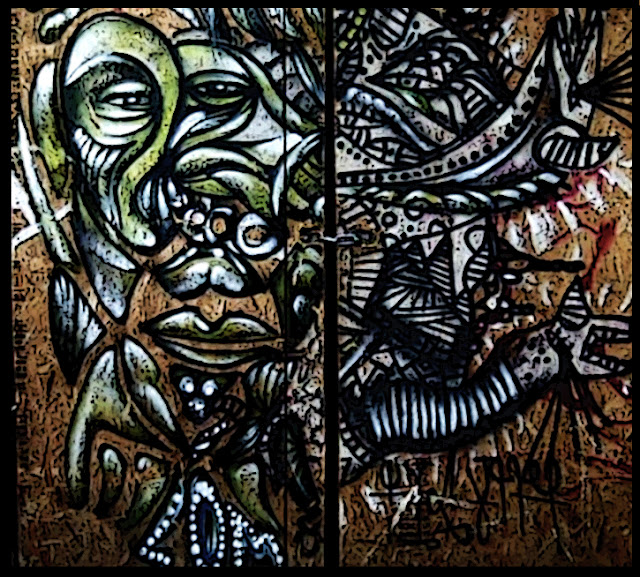Half the people in
the immensely long and varied country of Chile live in the sprawling capital
city Santiago, in a hollow under the Andes, under a cloud of smog. Towering
office blocks, mainly banks, mushroom along the avenues of the affluent Las
Condes district, heading towards the massive curtain of mountains in the east.
The car culture has a suburban US flavour, revolving around traffic jams,
parking spaces, petrol stations and shopping malls. The old bungalows and
sprinkled lawns are being demolished in favour of tall towers that block out
the sunlight. The Las Condes residents are aware that they live in an
artificial bubble of privilege, behind electric gates, looked after by domestic
servants. The grass verges are unnaturally green, graffiti is quickly painted
out, and all the shops and cinemas are a short drive away in the land-cruiser.
There is little need to descend into the streets of the bustling centre, let
alone the mean ‘barrios populares’, some of which are no-go areas for the
Carabineros police force. Television reports showing violent demonstrations in
the centre flicker across the plasma screens of Las Condes like news from
another planet.
I visited
the Roberto Matta show, filling three cavernous spaces with cosmic visions on a
grand scale. It was like seeing Moebius’ vertiginous science-fiction cities
blown up into blurry extravaganzas the size of tennis courts. Some of the
1960’s, anti-US-military canvases captured the spirit of Paris ’68. In 1970,
when Allende’s left-wing coalition was in the ascendant, Matta visited Santiago
from France. He assembled a group of fellow-communists to paint an optimistic
mural, structured like a comic strip, on a wall in the poor district of La
Granja. With Matta, the muralists of the Brigada Ramona Parra produced a
colourful sequence that was obliterated under several layers of paint in 1973.
Now, it is being painstakingly restored. The exhibition space itself sat under
the rebuilt Presidential Palace, bombed by the air force during the coup.
Across the
main road from the Moneda Palace, the walls were covered in graffiti and
murals, left over from the 20011 student demonstrations. The front of the building
was a compendium of bold, defiant images, in a variety of styles. Some
‘portraits’ of individual students showed self-depreciating humour. More
slogans and pictures were scattered along the sidewalks for miles, in all
directions. In 2006, Juan Vazquez had published comics supporting the protests
of children against low educational standards under the Bachelet government,
known as ‘The Revolution of the Penguins”, because of their school uniforms. He
pointed out a series of big comic-strip pages, criticising police brutality,
pasted to the University walls.
"These were produced by a group I belong to called "A Mano Alzada" (Freehand)," he said, "We aim to do much more in the coming year."
If, as seems probable, Pinera’s centre-right coalition continues to insist on private education run for profit, as opposed to a decent, free, state system, the stones, water cannons and tear gas canisters are set to fill the air again with the coming autumn. Further layers of paint, paper and aerosol will be added to the open-air expressionist exhibition in the streets. The contrast with the clean walls and glass office towers of Las Condes could not be greater.
A short walk
from the centre, the bohemian quarter of Bellavista lies across the glorified
storm drain that is the river Mapocho. Here, the low-rise shops, clubs and bars
are also decorated with garish murals. Experimental and imaginative styles
proclaim the district’s rebellious character. They provide a funky backdrop to
a good night out, covering entire blocks. With a dynamic, action-packed wall
behind you, leading through different themes and moods, you inhabit your own
comic strip as you walk along. Bellavista is a designated playground for
youngsters and students to let their hair down, a safety valve, surrounded by
loud music and loud imagery.
From this
immersive environment, it is only a hop across the bridge into the wide avenues
where the demonstrations take place. The concrete banks of the Mapocho used to
feature massive political murals, like Picasso’s ‘Guernica’ with a Native
American flavour, during Allende’s government. Under Pinochet, dead bodies
floated past the over-painted blank surfaces. Now, a hotchpotch of slogans had
reappeared.









No comments:
Post a Comment